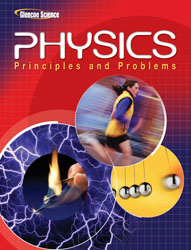1 A) water B) gas C) a vacuum D) steel 2 A) increase low-frequency hearing B) decrease low-frequency hearing C) increase high-frequency hearing D) decrease high-frequency hearing 3 A) timbre B) loudness C) speed D) pitch 4 A) wind B) volume C) temperature D) pressure 5 A) are absorbed by a hard surface B) reflect off a hard surface C) diffuse upon striking a hard surface D) refract through a hard surface 6 A) period B) speed C) frequency D) amplitude 7 A) wavelength B) temperature C) pressure D) frequency 8 A) the Doppler Effect B) the Big Bang C) the Galileo Effect D) speed change 9 A) transverse B) surface C) compressional D) electromagnetic 10 A) a radio wave B) a surface wave C) a pressure variation transmitted through matter D) fluctuations in electromagnetic energy 11 A) electromagnetic spectrum B) decibel C) pressure D) frequency 12 A) lengthen B) shorten C) gain amplitude D) decrease frequency 13 A) vibrating lips B) vibrating reeds C) vibrating strings D) vibrating brass 14 A) 1/2 wavelength or multiple thereof B) a multiple of the wavelength C) 1/4 wavelength or multiple thereof D) 1/3 wavelength or multiple thereof 15 In the figure below, If the length of the pipe is 0.75 m, what is the third resonant frequency?
<a onClick="window.open('/olcweb/cgi/pluginpop.cgi?it=jpg::::/sites/dl/free/0078807220/617923/mn.JPG','popWin', 'width=NaN,height=NaN,resizable,scrollbars');" href="#"><img valign="absmiddle" height="16" width="16" border="0" src="/olcweb/styles/shared/linkicons/image.gif"> (15.0K)</a> A) 457 Hz B) 150 Hz C) 686 Hz D) 915 Hz 16 A) a multiple of the wavelength B) 1/4 wavelength or odd multiples thereof C) 1/2 wavelength or multiple thereof D) 1/3 wavelength or multiple thereof 17 A) amplitude B) crest C) trough D) fundamental 18 A) standing-pipe resonator B) closed-pipe resonator C) no-pipe resonator D) open-pipe resonator 19 A) out of tune B) in melody C) in dissonance D) in consonance 20 If the apparatus in the figure below were set up to resonate for a 440 Hz tuning fork, what, if anything, must be done for it to resonate for a 500 Hz tuning fork?
<a onClick="window.open('/olcweb/cgi/pluginpop.cgi?it=jpg::::/sites/dl/free/0078807220/617923/mo.JPG','popWin', 'width=NaN,height=NaN,resizable,scrollbars');" href="#"><img valign="absmiddle" height="16" width="16" border="0" src="/olcweb/styles/shared/linkicons/image.gif"> (7.0K)</a> A) Raise the air tube. B) No adjustment is needed. C) Add water. D) Hit the fork harder. 21 In the figure below, If the length of the pipe is 0.75 m, what is the fundamental wavelength?
<a onClick="window.open('/olcweb/cgi/pluginpop.cgi?it=jpg::::/sites/dl/free/0078807220/617923/mn.JPG','popWin', 'width=NaN,height=NaN,resizable,scrollbars');" href="#"><img valign="absmiddle" height="16" width="16" border="0" src="/olcweb/styles/shared/linkicons/image.gif"> (15.0K)</a> A) 0.50 m B) 1.5 m C) 0.38 m D) 0.75 m 22 A) no-pipe resonators B) closed-pipe resonators C) open-pipe resonators D) free from resonance 23 A) amplified interference B) destructive interference C) compressional interference D) constructive interference 24 A) vibration from the lips B) electronic speakers C) the resonance on a membrane D) the resonance of a pipe 25 If in the figure below the rightmost picture shows resonance for 325 Hz, what is the fundamental frequency of the pipe?
<a onClick="window.open('/olcweb/cgi/pluginpop.cgi?it=jpg::::/sites/dl/free/0078807220/617923/mp.JPG','popWin', 'width=NaN,height=NaN,resizable,scrollbars');" href="#"><img valign="absmiddle" height="16" width="16" border="0" src="/olcweb/styles/shared/linkicons/image.gif"> (14.0K)</a> A) 325 Hz B) 195 Hz C) 406 Hz D) 65 Hz 26 A) the earlobe B) the eardrum C) fluid in the ear D) tiny hairs in the cochlea 27 A) 1 to 4 B) 1 to 2 C) 1 to 8 D) 1 to 1 28 A) vibrations in vocal chords B) changes in air temperature C) body heat D) vibrations in the eardrum 29 If in the figure below the rightmost picture shows resonance for 325 Hz, what is the next highest frequency at which resonance will occur?
<a onClick="window.open('/olcweb/cgi/pluginpop.cgi?it=jpg::::/sites/dl/free/0078807220/617923/mp.JPG','popWin', 'width=NaN,height=NaN,resizable,scrollbars');" href="#"><img valign="absmiddle" height="16" width="16" border="0" src="/olcweb/styles/shared/linkicons/image.gif"> (14.0K)</a> A) 365 Hz B) 390 Hz C) 455 Hz D) 406 Hz 30 A) vibrating brass B) vibrating reeds C) vibrating lips D) vibrating strings 31 A) harmonics interfering with their fundamentals B) waves with nearly identical frequencies interfering with each other C) notes that are at least an octave apart D) musical notes that are in consonance with each other














